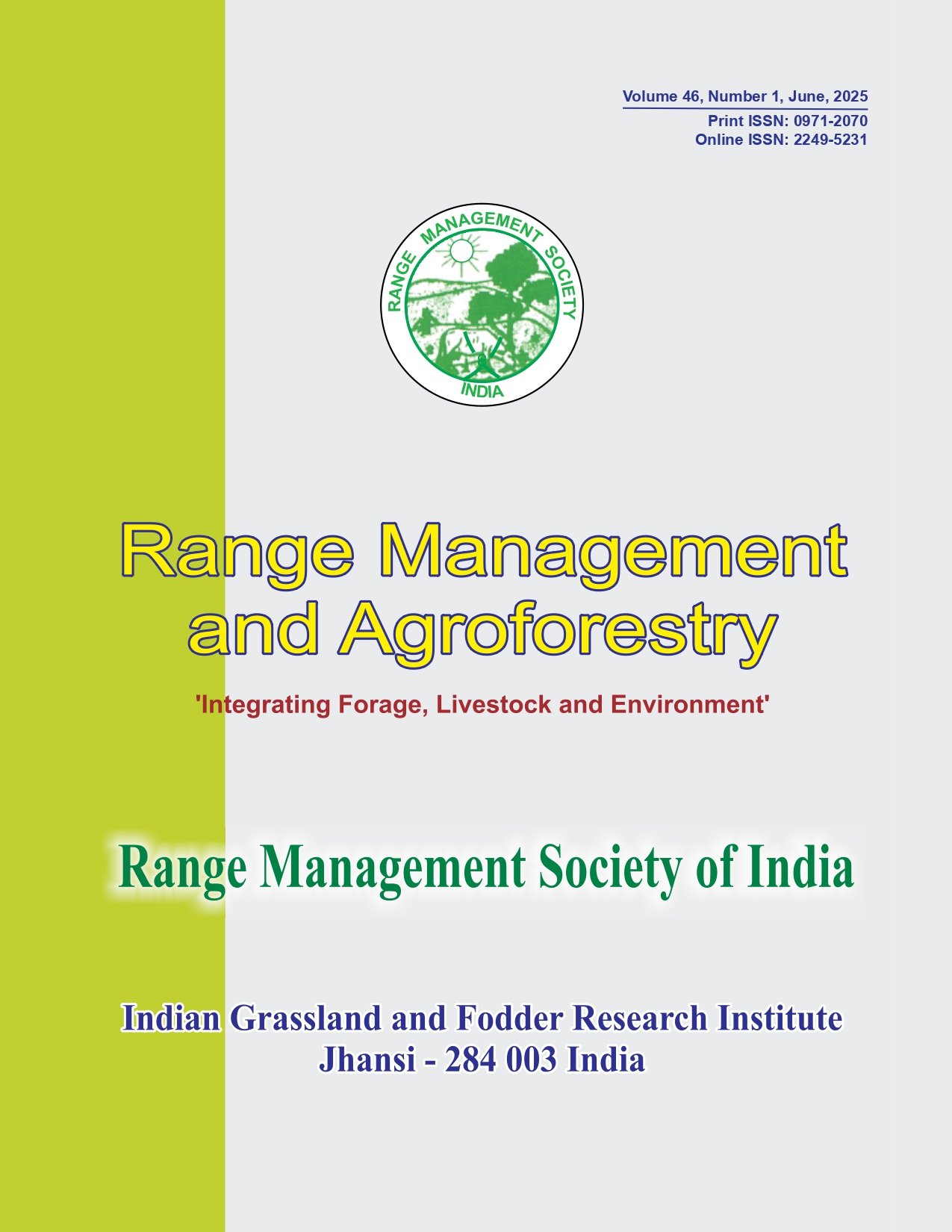Effect of altitude on nutritional profile of white clover (Trifolium repens L.)
Keywords:
Anti-nutrients, Forage legume, Hydrocyanic acid, Nutritive profile, White cloverAbstract
In the present study, white clover from different altitudes in mid Himalayas was investigated for nutritive profile. Protein content revealed variation from 18.66 to 24.38% with altitude. The lowest protein content was observed in white clover from low elevations. The fiber content (NDF and ADF) and cell wall constituents (ADL, hemicelluloses and cellulose) were observed inversely related to altitude. The cell content, total ash and reducing sugars increased from 32.47 to 40.37%, 8.23 to 10.46% and 89.10 to 53.32 mg/g, respectively with increase in elevation. Total phenols, simple phenols and tannins were also inversely related (1.84 to 0.82%, 0.81 to 0.31% and 1.03 to 0.51%, respectively) with altitude. However, hydrocyanic acid (HCN) content in white clover plants followed the reverse trend. HCN content increased from 0.360 to 1.044mg/g on dry matter basis from lower to higher elevation. The study revealed that white clover from higher altitudes is nutritionally superior as compared to lower altitudes; however, elevated levels of HCN content at higher altitudes affect the feeding value of white clover.




